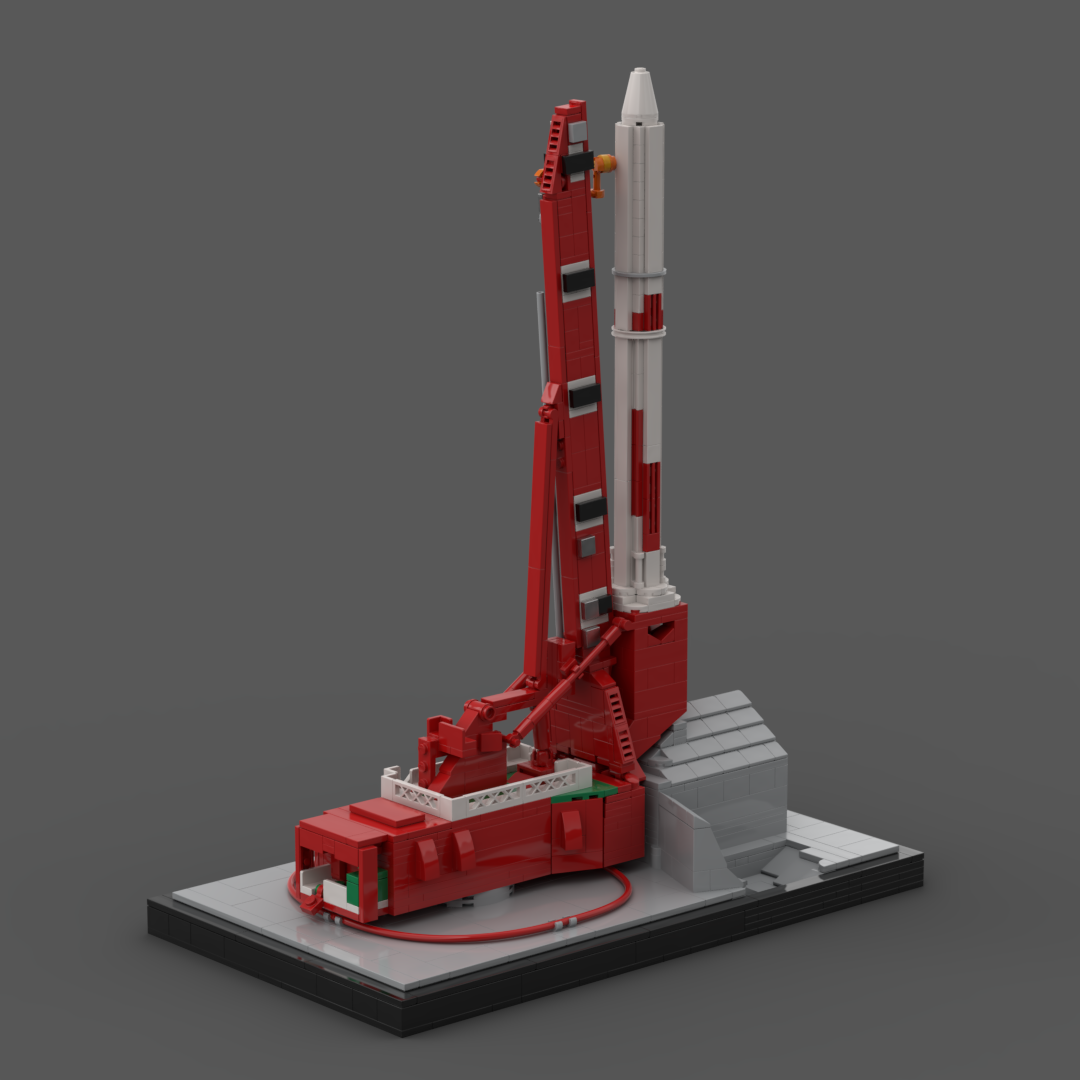
LEGO Designer:
Florentin Möller (SkySaac)
Designed:
August 2022
Categories:
All, Launch Pads, Launch Vehicles, Small Lift Launch Vehicles, Space Agency - JAXA
Launch Vehicle Details
Stages:
Length:
Diameter:
Mass at Launch:
Low Earth Orbit Capacity:
Total Thrust:
Apogee:
Class:
The Epsilon Launch Vehicle is a Japanese rocket designed specifically for launching scientific satellites. It was created as a more cost-effective alternative to the M-V rocket, which was retired in 2006. Developed by the Japan Aerospace Exploration Agency (JAXA) starting in 2007, the Epsilon rocket is capable of carrying a 590 kg payload into Sun-synchronous orbit.
The launch pad for the Epsilon rocket is located at the Uchinoura Space Center, which was previously used for Mu launch vehicles. The first Epsilon launch, carrying the SPRINT-A scientific satellite, took place on 14 September 2013 at 05:00 UTC (14:00 JST), with a cost of US$38 million.
However, the first planned launch of the Epsilon rocket on 27 August 2013 had to be aborted 19 seconds before liftoff due to a botched data transmission. A ground-based computer attempted to receive data from the launch vehicle 0.07 seconds before it was actually transmitted.
The initial version of the Epsilon rocket has a payload capacity to low Earth orbit of up to 500 kilograms. The operational version is expected to have the ability to place 1,200 kg (2,600 lb) into a 250 by 500 km (160 by 310 mi) orbit or 700 kg (1,500 lb) into a circular orbit at 500 km (310 mi) with the aid of a hydrazine fueled stage.
Uchinoura Space Center
The Uchinoura Space Center, located in the town of Kimotsuki, Kagoshima Prefecture, is a Japanese space launch facility. Previously known as the Kagoshima Space Center (KSC), it was the primary launch site for all of Japan’s scientific satellites before the retirement of the M-V launch vehicles in 2006. The center is still used for suborbital launches and has recently been utilized for the Epsilon orbital launch vehicle. It also hosts antennas for communication with interplanetary space probes.
Part count: bricks, lots.
| Unit | width | length | height |
|---|---|---|---|
| Studs | |||
| Inches | |||
| Centimetres |
No: TNo. Type: Serial: Date: LS Payload
1 1 Epsilon CLPS F01 14.09.2013 Ka LP-M EXCEED (SPRINT A)
2 1 Epsilon (2) F02 20.12.2016 Ka LP-M ERG (SPRINT B)
3 1 Epsilon (2) CLPS F03 17.01.2018 Ka LP-M ASNARO 2
4 2 Epsilon (2) CLPS F04 18.01.2019 Ka LP-M RAPIS 1 / ALE 1 / Hodoyoshi 2 / MicroDragon / OrigamiSat 1 / AOBA-VELOX 4 / NEXUS
5 3 Epsilon (2) CLPS F05 09.11.2021 Ka LP-M RAISE 2 / Hibari / Z-Sat / DRUMS / TeikyoSat 4 / ASTERISC / NanoDragon / KOSEN 1 / ARICA
6 4 Epsilon (2) CLPS F06 12.10.2022 F Ka LP-M RAISE 3 / QPS-SAR 3, 4 / MAGNARO A, B / KOSEN 2 / MITSUBA / Waseda-SAT 0 / FSI-SAT
Planned:
x 5 Epsilon (2) CLPS F07 xx.xx.2025 Ka LP-M Small-JASMINE
x x Epsilon-S . xx.xx.2030 Ka LP-M HiZ-GUNDAM
x 1 Epsilon-S F08 xx.xx.2025 Ka LP-M LOTUSat 1
x 2 Epsilon-S F09 xx.xx.2025 Ka LP-M RAISE 4 / ?
x 5 Epsilon-S F12 xx.xx.2026 Ka LP-M RAISE 5 / ?
x 4 Epsilon-S F11 xx.xx.2026 Ka LP-M Solar C (EUVST)
Ka = Kagoshima Space Center / Uchinoura Space Center, Kagoshima, Kyushu, Japan
Launch History information from space.skyrocket.de
Launch History information from space.skyrocket.de
Related Posts
None found

